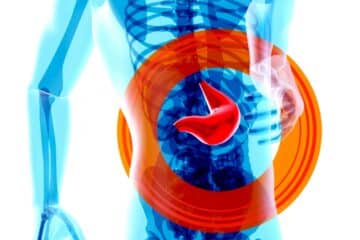Both similar to and uniquely different than perspectives of the organs in Western Medicine, the body’s organ system in Oriental Medicine comprises the glandular system, the Lungs, the Large Intestine, the Stomach, the Spleen/Pancreatic system, the Liver, the Gallbladder, the Heart, the Small Intestine, the Pericardium (the tissue surrounding the Heart), the Kidney/Adrenal system, the Urinary Bladder, and an organ network known as the “Sanjiao” (English translation: “three burner,” which describes three distinct organ systems that together regulate body temperature, water distribution and digestion).
The organ system is closely linked with glandular function. For example, the Spleen and Pancreas are anatomically connected; when an Acupuncturist discusses “Spleen” function, he/she is actually referring to the Spleen/Pancreatic system which produces insulin that allows the body to utilize sugars, stimulates immune system function, produces certain blood cells, assists the Stomach in metabolism of food and facilitates nutrient distribution throughout the body via the bloodstream. Another commonly misunderstood organ/gland relationship is the Kidney/Adrenal system. When an Acupuncturist uses the term “Kidney,” the reference is made to both the Kidneys and the Adrenal glands, which are anatomically connected. The Kidney/Adrenal system produces crucial raw materials for hormone production. For example, the Kidney/Adrenal system stimulates the pituitary gland which in turn releases thyroid stimulating hormone to the thyroid which affects the bones, growth, development, metabolism, body temperature and Heart rate.
Clinically, it is quite clear that function governs structure, not the other way around. Examples discovered in Oriental Medicine of organs governing specific body structures follow: the Spleen/Pancreatic system governs the production and density of muscle tissue; the Kidney/Adrenal system governs the production and density of bone tissue, the spine, bone marrow, brain tissue and the nervous system; and the Liver governs the tendons and ligaments.
What follows are the body’s main organs’ dynamic functions from Oriental Medicine’s view point , which are quite extensive when compared to conventional Western Medical theory. Links to the emotions are discussed in the following descriptions; keep in mind physicians in China began to explore the nature of human emotion thousands of years ago and discovered a direct relationship between human emotion and the organ system.
One should note that all of the following functions occur only when the organ is healthy and functions optimally.
The Heart governs the blood, controls the blood vessels, shows its health in the complexion, houses the mental faculties of the individual (the Heart, in fact, is referred to as the “king” of emotions), opens to the tongue and controls perspiration.
The Liver–among its 600 function–“stores” the blood, ensures free circulation of blood and energy throughout the body, controls the tendons and ligaments, shows its health in the fingernails and toenails, opens into the eyes and is said to influence one’s ability to plan and find direction in life.
The Lungs govern energy/oxygen/respiration, control the blood vessels and circulation, “disperse” and “descend” (meaning they send oxygen and fluids taken from the air into the bloodstream), regulate water passageways, control the skin, control the hair, are related to the body’s movement and encourage sharp, clear sensory function.
The Spleen/Pancreatic system governs the “transformation” and “transportation” of food and fluids throughout the body; controls blood; controls the muscles; controls the arms and legs; opens to the mouth; shows its health in the lips; “suspends” the organs and other tissues in their correct location and is said to influence thinking, studying, concentrating, focusing and memorizing.
The Kidney/Adrenal system is connected with one’s genetic line, governs birth, governs growth, governs reproduction, governs development, produces the “marrow,” nourishes the brain, controls the bone tissue, governs water and fluid distribution throughout the body, assists oxygen distribution throughout the body, opens into the ears, shows its health in the hair, controls the opening and closing of the anus and urethra and is said to influence one’s ability to focus on goals and pursue them effectively.
The Pericardium, a sac of tissue surrounding and protecting the Heart, shares the Heart’s functions and is said to influence one’s relations with others.
The Stomach (closely associated with Spleen/Pancreatic system function) “ferments” the food and drink one consumes thus making it usable by the body, helps transport the nutrients from food throughout the body, moves the food and fluids downward into and through the digestive tract and is said to be the “origin” of the vital fluids of the body.
The Small Intestine receives and transforms further the mostly digested food and fluid from the Stomach; it also separates usable from unusable fluids, sends unusable fluids to the Urinary Bladder and is said to influence one’s ability to distinguish important from unimportant life issues.
The Large Intestine receives digested foods and fluids from the Small Intestine, re-absorbs some of those fluids and excretes the stools.
The Gall Bladder stores bile that is produced by the Liver, excretes bile upon consumption of fats and is said to influence one’s ability to make decisions.
The Urinary Bladder transforms, stores and excretes fluids.
Remarkably, 100’s of years ago, these organs were well understood in China…to the degree that specific symptoms that arise were discovered to be rooted in specific organ imbalances! And…..that a person could learn the state of any given organ’s function by very simple–yet powerful–diagnostics. Often those diagnostics were actually used to PREVENT disease, not just treat the symptom.
Want to learn how those diagnostics are performed and have your organ system evaluated? Go to https://holisticacupuncture.net/diagnosis/


